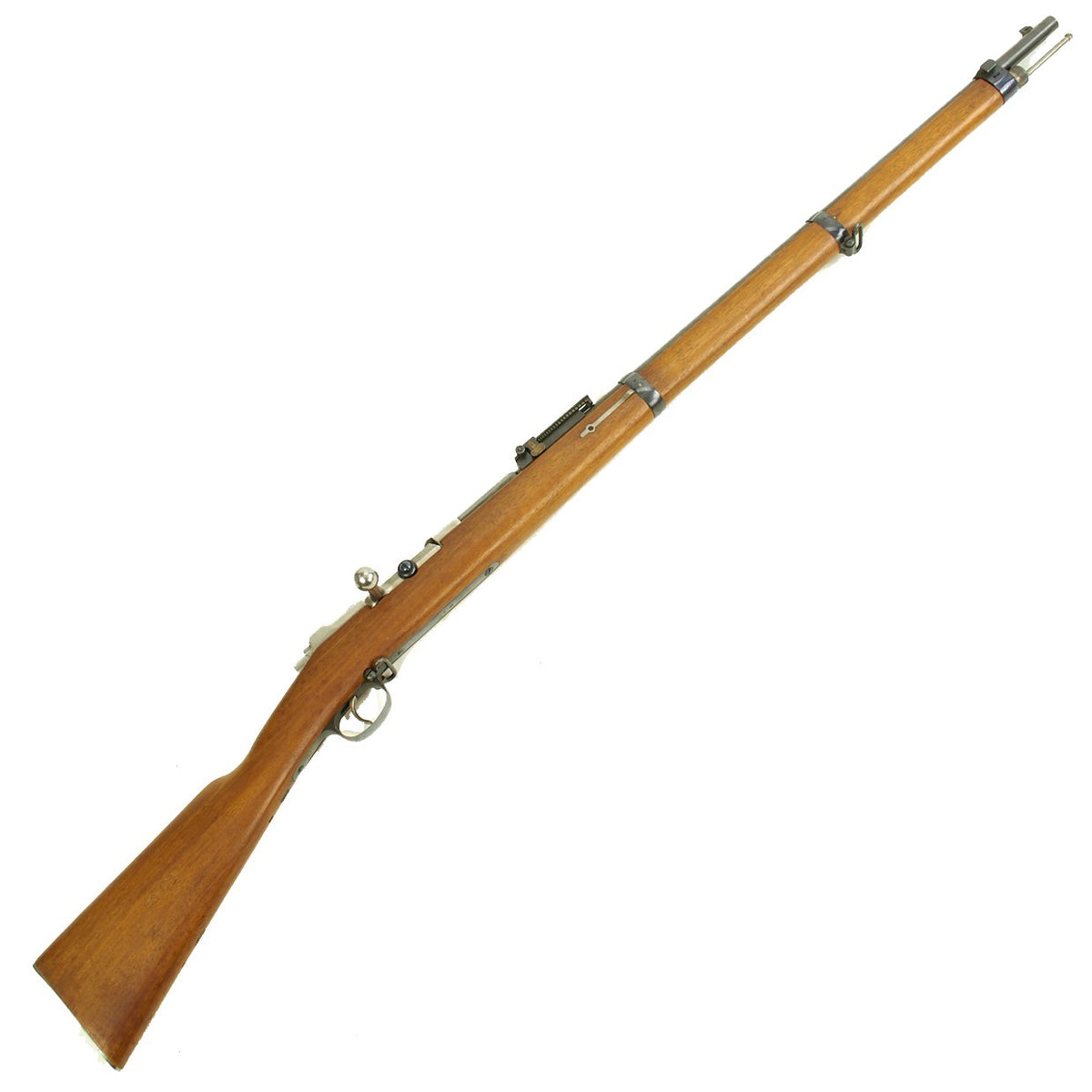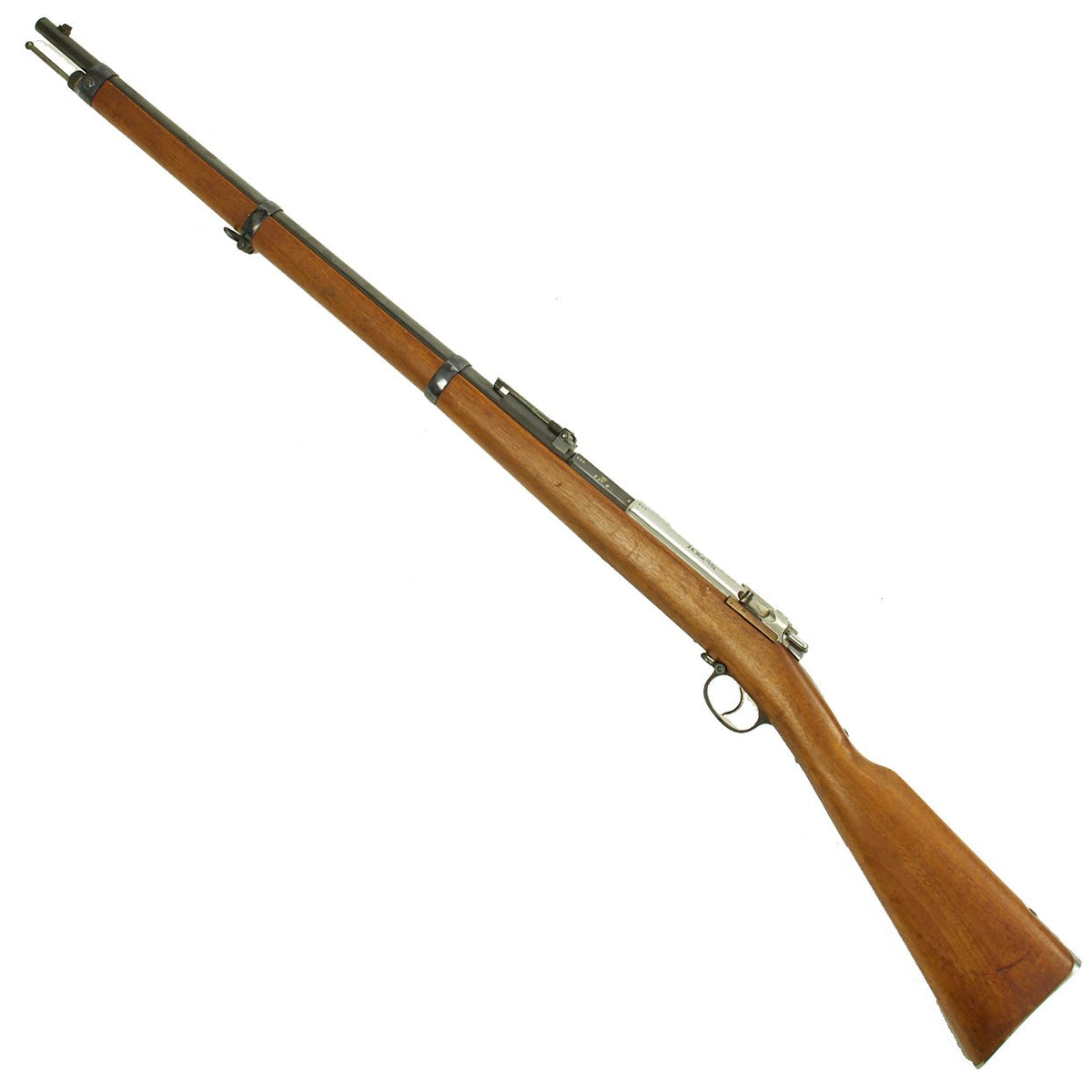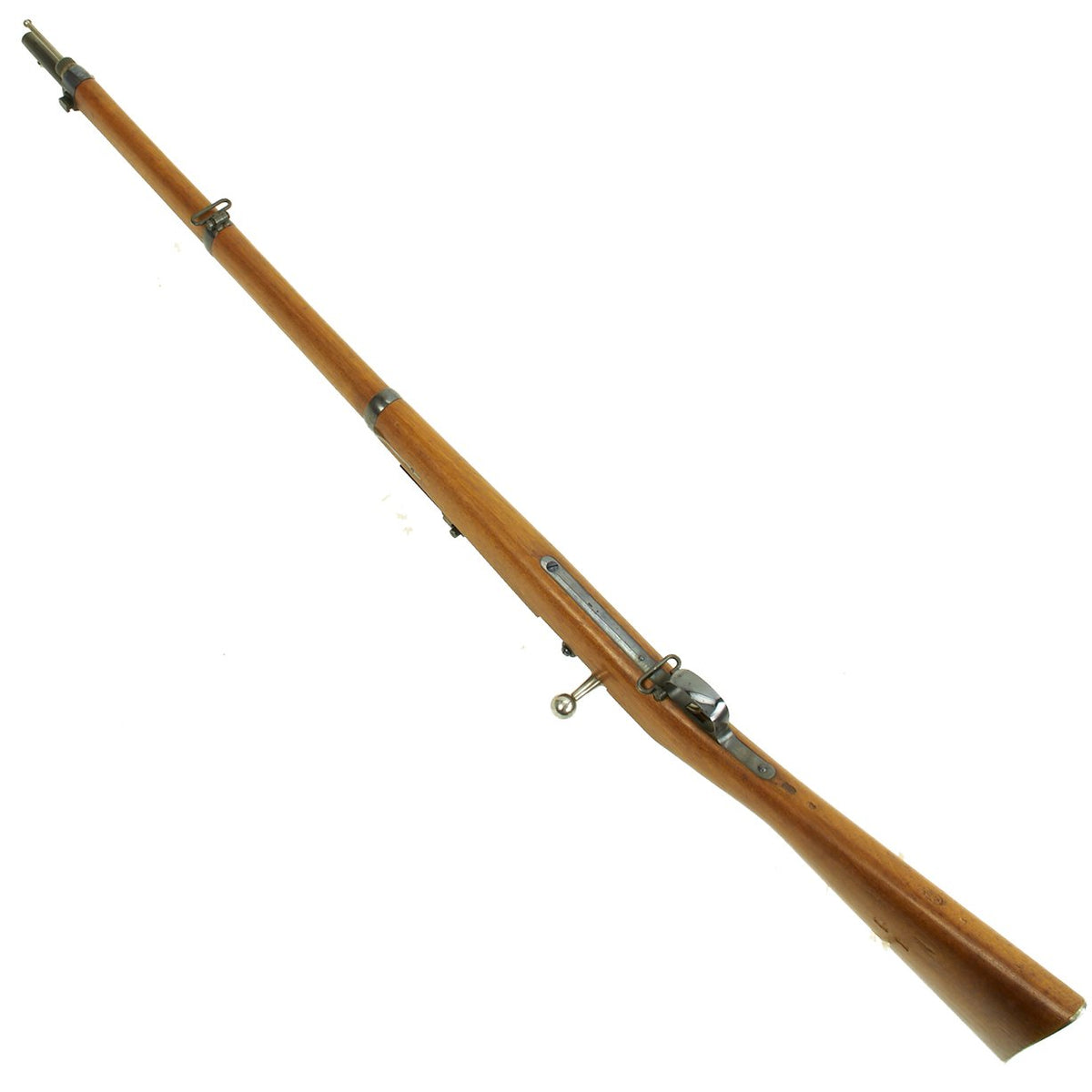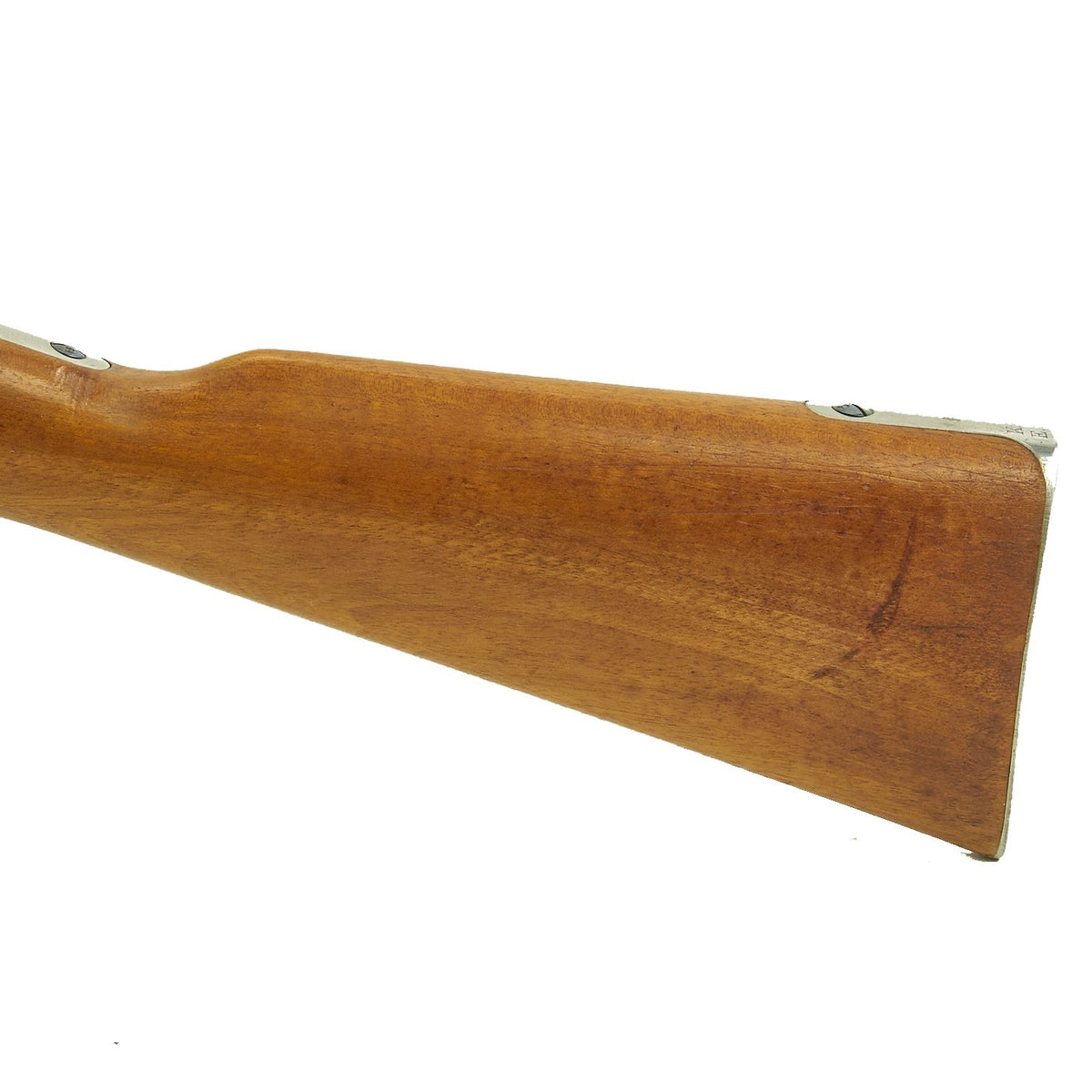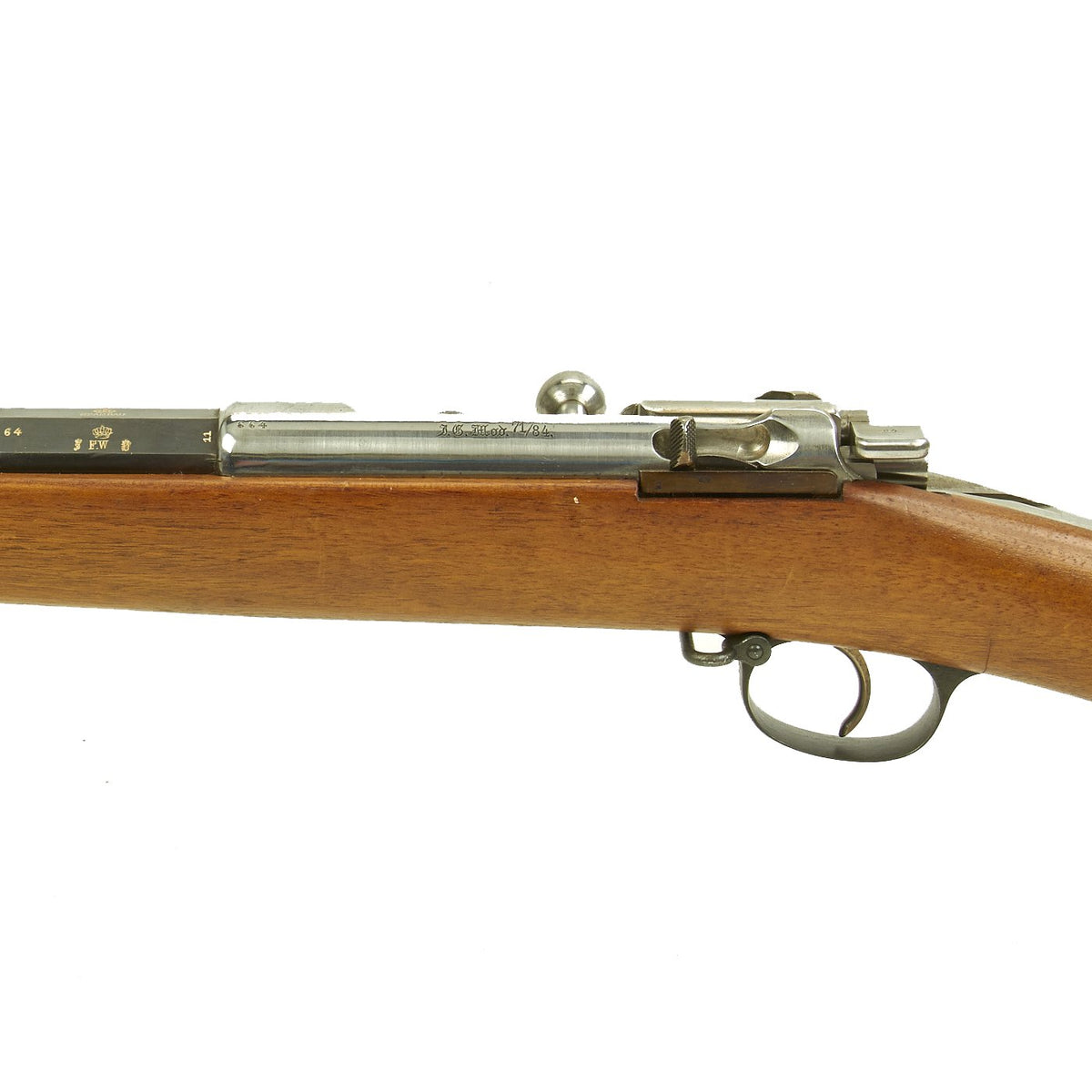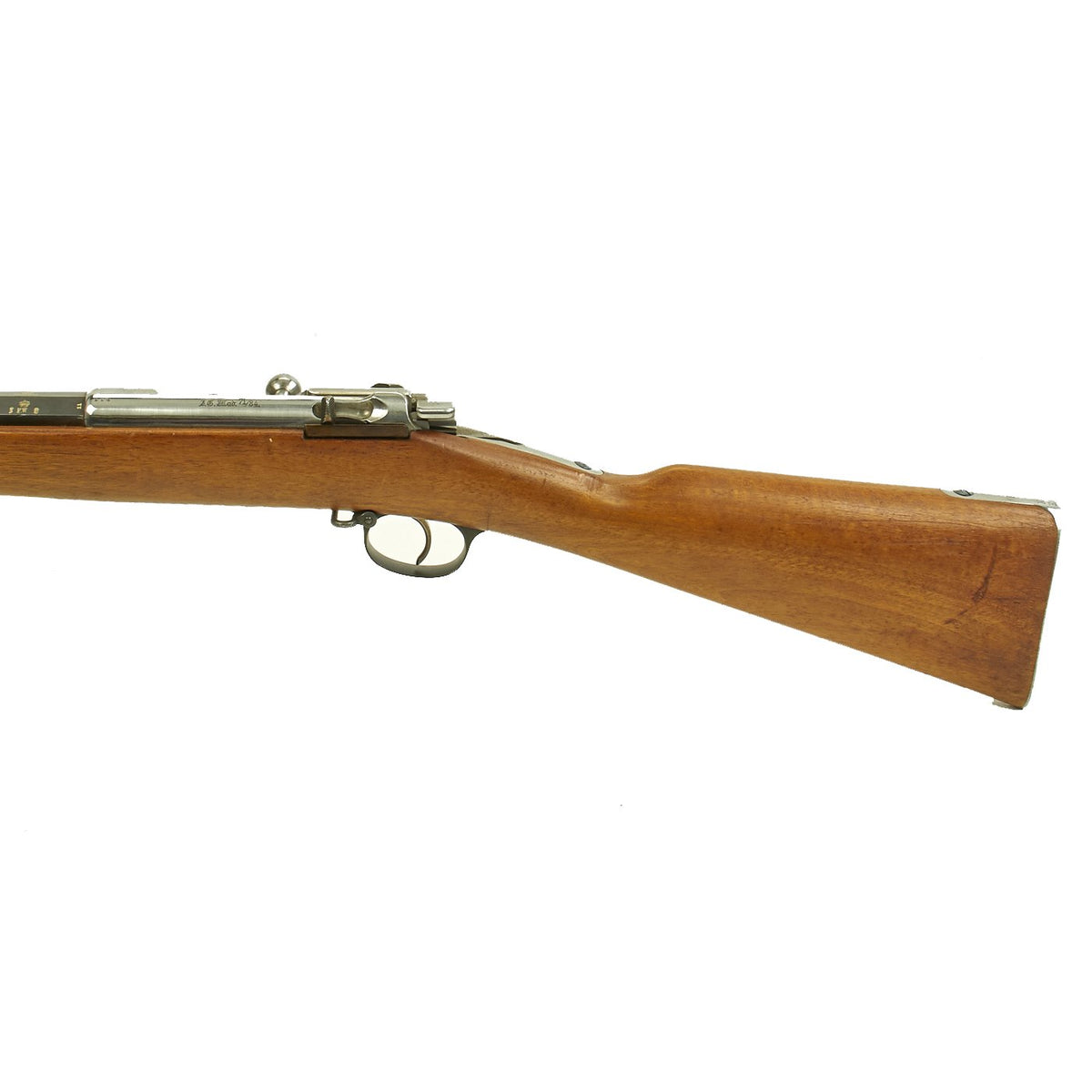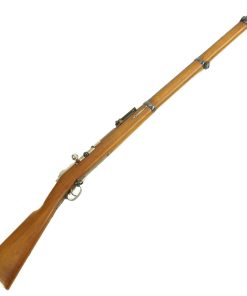Original German Museum Grade Mauser Model 1871/84 Rifle by Spandau Dated 1887 – Serial No 664 Original Items
$ 2.195,00 $ 548,75
Original Item: Only One Available. “Museum Grade” is not a term that we use often at all, so we do not use it lightly. However there is no better description for the condition of this rifle. It definitely never saw service, and is one of the best examples of the Mauser Model 1871/84 rifle that we have ever seen. Only two that we can recall exceeded the condition of this example. It is covered with Imperial German inspection and acceptance markings on the metal work, almost as crisp as the day it was made. Many of these have all been hi-lighted with white so they present better.
The tang of the butt plate is regimentally marked with K. F. R. / E. 2. 233., for the Kaiser Franz Garde-Grenadier-Regiment Nr. 2, also known as the 2nd (Emperor Francis) Guards Grenadiers Regiment. The markings also indicates that it was issued to the Ersatz (Replacement) Battalion, Company 2, Weapon 223. This is an “honorific” type regimental marking, as the standard would have been “G. G. R. 2.”. These units did not see service as often, which most likely explains the excellent condition of the rifle. The regiment was first raised in 14 October 1814 and was garrisoned in Berlin, as many of the guard regiments were.
The rifle shows only light wear, though there is some light pitting on the top of the barrel in one spot bout 3 inches above the middle barrel band. We suspect it was leaning on something for a long time, which caused this. We do not expect that this weapon was ever out in the field for more than a few days, if that. The serial number 664 or shortened number 64 appears on every component of the rifle. This is a completely matched, totally unmessed with rifle.
The receiver is dated 1887. and marked I. G. Mod. 71/84. on the opposite side. The rifle is complete with all major parts intact and functional, and almost all of the original finish. The receiver is bright steel, while the barrel and other fittings are a polished high-gloss blue finish. There are a few arears of light staining on the bright areas. It also shows that this rifle was not one that someone refurbished: it’s all original. The bore looks brand new. The stock only has a few small dents and a scratch on the left butt stock, and is other wise in incredible shape, with all proofs intact and clear.
The top of the chamber is marked Crown over SPANDAU, for the Prussian (and later Imperial) Spandau arsenal in Berlin, a storied production plant that would produce weapons up until 1919, including the famous MG08 Maxim. Below this is the Crown over FW proof for Kaiser Wilhelm I, who used this cypher during his reign 1861-1888
This gun is most likely a WW1 Veteran’s “bring back” souvenir. Great quantities of these 71/84 Rifles were pressed into service in WWI since great piles of them had been put into storage in 1888 with the introduction of the M-1888 7.92mm German Commission Rifle. This one however was probably recovered from the factory, or someone’s house. The action works well, as does the magazine cutoff and feed mechanism.
A true “Museum Grade” Mauser 71/84 rifle, which will will probably not see the like of again. This is a chance to add a truly magnificent piece of Mauser rifle to your collection. Ready to display!
Originally adopted as the Gewehr 71 or Infanterie-Gewehr 71, or “Infantry Rifle 71 (“I.G.Mod.71” was stamped on the rifles themselves) this was the first rifle model in a distinguished line designed and manufactured by Paul Mauser and Wilhelm Mauser of the Mauser company, and later mass-produced at Spandau arsenal.
Paul Mauser developed his bolt-action rifle from 1866 to 1871. During 1870-71 trials with many different rifles took place, with the “M1869 Bavarian Werder” being the Mausers’ chief competitor. The Mauser was provisionally adopted on 2 December 1871, pending the development of an appropriate safety. With support from the government’s Spandau arsenal, the improvements to the safety mechanism were completed and the rifle was formally accepted on 14 February 1872 as Infantry Rifle Model 1871 by the German Empire excluding Bavaria. The action was not based on its predecessor, the Dreyse needle gun which had seen service during the Franco-Prussian War of 1870-71, and which was found to have a number of weaknesses.
The now well known Mauser “wing” type safety lever was developed for the Gewehr 71. The Gewehr 71 is a conventional looking bolt action chambered in 11mm using black powder cartridges. The action included only a bolt guide rib as its single locking lug, locking forward of the receiving bridge. The original design was a single-shot. The design was updated in 1884 with an 8-round tubular magazine designed by Alfred von Kropatschek, making this Germany’s first repeating rifle. This version was designated the Gewehr 1871/84. A version of this repeater was adopted by the Ottoman Empire. Designated the M1887, it differentiated from the M71/84 in that it had a side mounted cleaning rod, a second locking lug on the rear of the bolt, and it was in caliber 9.5×60mmR, which Paul Mauser touted as the most efficient (black powder) cartridge. In the early 20th century a few were converted to 7.65×53mm smokeless by the arsenal in Ankara.
Specifications-
Year of Manufacture: 1887
Caliber: 11x60mmR Mauser
Cartridge Type: Centerfire Cartridge
Barrel Length: 32 inches
Overall Length: 51 Inches
Action type: Bolt-Action
Feed System: 8 Round Tubular Magazine
NOTE: International orders of antique firearms MUST be shipped using UPS WW Services (courier). USPS Priority Mail international will not accept these.
Fast Shipping with Professional Packaging
Thanks to our longstanding association with UPS FedEx DHL, and other major international carriers, we are able to provide a range of shipping options. Our warehouse staff is expertly trained and will wrap your products according to our exact and precise specifications. Prior to shipping, your goods will be thoroughly examined and securely secured. We ship to thousands clients each day across multiple countries. This shows how we're dedicated to be the largest retailer on the internet. Warehouses and distribution centres can be located throughout Europe as well as the USA.
Note: Orders with more than one item will be assigned a processing date depending on the item.
Before shipping before shipping, we'll conduct a thorough inspection of the items you have ordered. Today, the majority of orders will be delivered within 48 hours. The delivery time will be between 3-7 days.
Returns
The stock is dynamic and we cannot completely manage it because multiple stakeholders are involved, including our factory and warehouse. So the actual stock may alter at any time. It's possible that you may not receive your order once the order has been made.
Our policy is valid for a period of 30 days. If you don't receive the product within 30 days, we are not able to issue a refund or an exchange.
You can only return an item if it is unused and in the same state as the day you received it. You must have the item in its original packaging.
Related products
Uncategorized
Uncategorized
Uncategorized
Armoured Fighting Vehicles of the World: AFVs of World War One (Hardcover Book) New Made Items
Uncategorized
Angolan Rebel 1970s era 60mm Inert Display Mortar from Angolan Civil War Original Items
Uncategorized
Uncategorized
Uncategorized
Uncategorized
Uncategorized
Uncategorized
Armored Burgonet Helmet & Polearm from Scottish Castle Leith Hall Circa 1700 Original Items
Uncategorized
Uncategorized
Uncategorized
Uncategorized
Uncategorized
